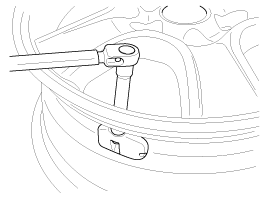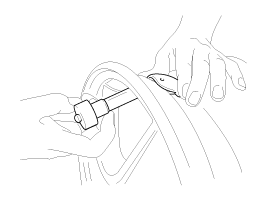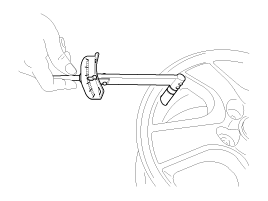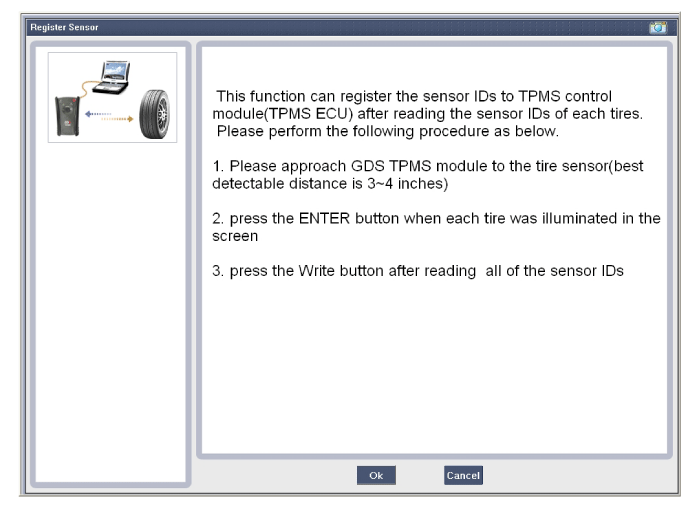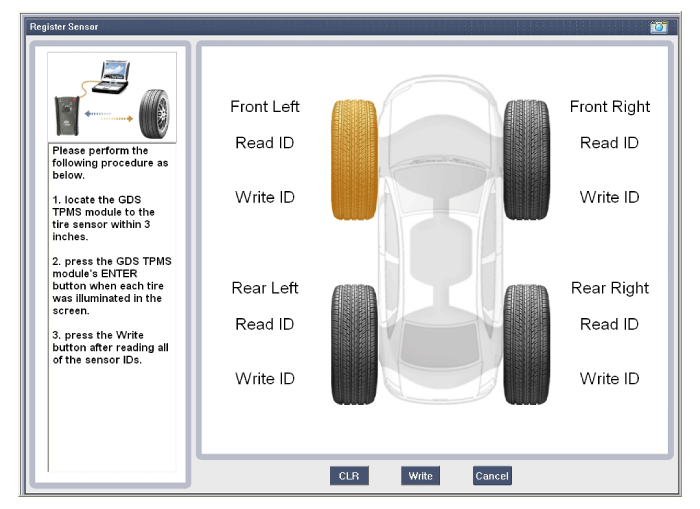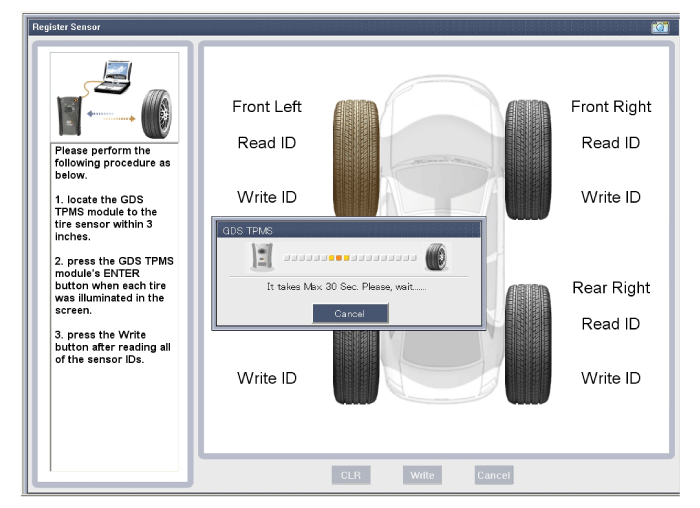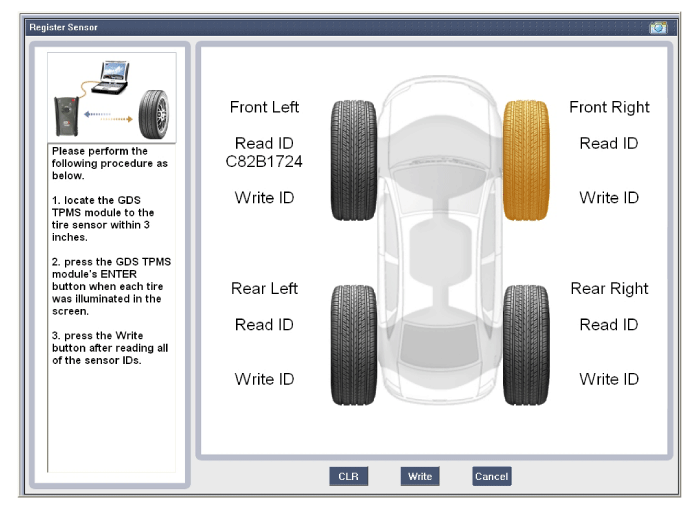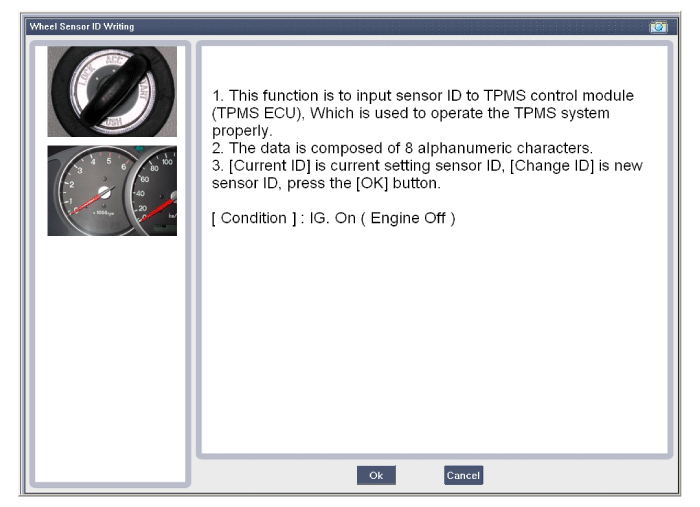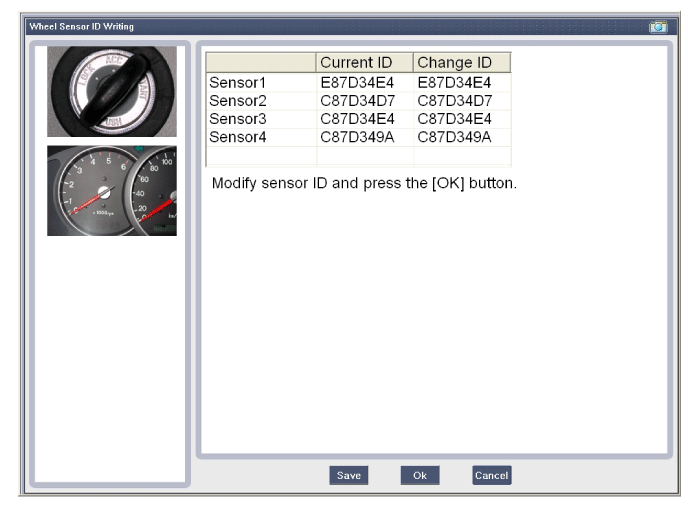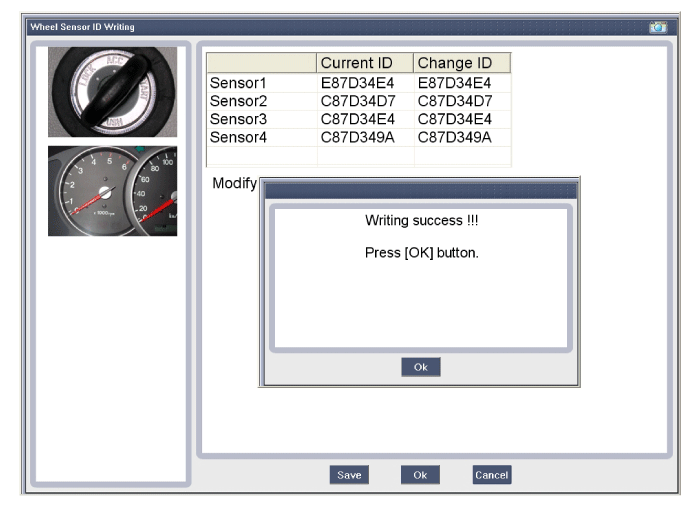 Hyundai Sonata: TPMS Sensor. Repair procedures
Hyundai Sonata: TPMS Sensor. Repair procedures
Removal
Handle the sensor with care.
|
| 1. |
Remove the tire. (Refer to "Tire Removal")
|
| 2. |
Remove the valve nut.
|
| 3. |
Discard the valve assembly.
|
Installation
Sensor Fit
|
| 1. |
Slide the sensor-valve unit through the valve hole of the rim.
Hold the sensor against the rim and the rubber grommet against the sealing
surface.
|
| 2. |
Insert the nut over the valve stem and then tighten the nut.
|
| 3. |
Continue to tightening the nut until contact with the rim and
then tighten to 3.5 ~ 4.5Nm.
|
| 4. |
Check that the sensor is firmly attached to the rim.
|
| 5. |
Carry out inflation / pressure correction and then fit valve cap.
|
| 6. |
Install the tire. (Refer to "Tire Installation")
Sensor ID Writing (Wireless)
Sensor ID Writing
|
 TPMS Sensor. Description and Operation
TPMS Sensor. Description and Operation
Description
1.
Mode
(1)
Configuration State
A.
All sensors should be in the Low Line (Base ...
 TPMS Receiver. Description and Operation
TPMS Receiver. Description and Operation
Description
1.
Mode
(1)
Virgin State
A.
The receiver as a sole part is shipped in this
...
See also:
Exhaust Manifold. Repair procedures
Removal and Installation
1.
Remove the engine cover.
2.
Disconnect the battery negative terminal.
Tightening torque
...
Components and Components Location
Component Location
1. Head lamp (Low)
2. Head lamp (High)
3. Front fog lamp
4. Turn signal/ Position lamp
5. Tail lamp
6. High mounted stop lamp
7. Tail lamp/Stop ...
Aux, USB and iPod® port
If your vehicle has an aux and/or USB(universal serial bus) port or iPod port,
you can use an aux port to connect audio devices and a USB port to plug in a USB,
and an iPod port to plug in an ...

